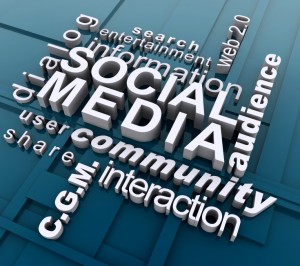The debate is whether social media is a conversation or a one way form of communication. I argue that it’s a matter of quality versus quantity.
Responding to Comments–Three Cases:
I did a presentation on social media before leadership of a federal government agency. There was a point where we discussed the logistics of responding to user comments.
I stated that comments were not a major logistical problem; that most did not require a personalized response.
The agency head expressed puzzlement. “Wait a minute,” he exclaimed. “I thought the primary function of social media was to be social, to engage your audience in conversation.”
Second example; I wrote an article for a national website for government (GovLoop) and a reader expressed dismay when I wrote that social media did not require extensive conversations. He suggested that social media was a bit of a fraud; it was principally a one way form of communication.
A third example; there is recent research suggesting that the vast majority of comments to corporate Facebook sites do not get a response.
So is social media really social?
Some Perspective:
Many years ago I ran clearinghouses for federal agencies supporting a national anti-crime effort which was the most successful public service ad campaign in the country’s history (the McGruff the Crime Dog-Take a Bite out of Crime campaign).
We reached millions with television, radio and print ads. The overwhelming number of people who responded simply asked for booklets providing more information. The vast majority of the rest received prepared fact sheets answering their questions. Possibly one percent required a personalized response. Most people (per survey) were more than satisfied with prepared material.
Today’s Social Media:
Social media has no clear definition as to content or purpose; it depends on your audience and what you are trying to achieve. You create material that matches learning styles (audio, video, fact sheets, story-based articles) and you offer unique perspectives that no one else is providing. You place all on a website and additional channels (i.e., YouTube, Facebook, Twitter, Google+) and you sit back and see what happens.
Whether you represent government or nonprofits or associations or corporations, social media represents an “invitation” to converse. It’s not a requirement. So our critics are right, it’s mostly a one-way street.
That said, it becomes a matter of quality versus quantity.
Your job is to offer great, user-friendly content in unique ways. If people learn or engage by donating to a cause or purchasing a product then you have accomplished your goals.
There are many additional benefits of social media that accomplish agency goals that are too numerous to discuss here. We “do” social media because it benefits our agencies “and” our audiences.
But Conversations Remain Critical:
But nothing I said negates the fact that conversations “are” important to many. Throughout my social media and clearinghouse career I responded to thousands of people who wanted conversations. I’ve had over a hundred comments on some platforms on one topic.
These inquiries included Congressional staffers, mayors, community leaders, agency heads and everyday citizens. Many were decision makers important to our issues and priorities.
My organizations learned lessons from the unique perspectives of users; we became better agencies and improved operations. We responded to their problems and issues in a personalized way. We learned from them and they learned from us. It was social in every meaning of the word.
Thus social media really “is” social for those who choose to engage and the payoffs can be considerable. Decision makers from Congress on down expressed appreciation for user-friendly materials that helped them understand issues.
It’s our job to issue the invitation, to reach out, to be accessible in unique and meaningful ways. It’s our mission to serve. In my opinion, that’s the essence of social media. It’s quality, not quantity.
Best, Len.




Leave a Reply
You must be logged in to post a comment.